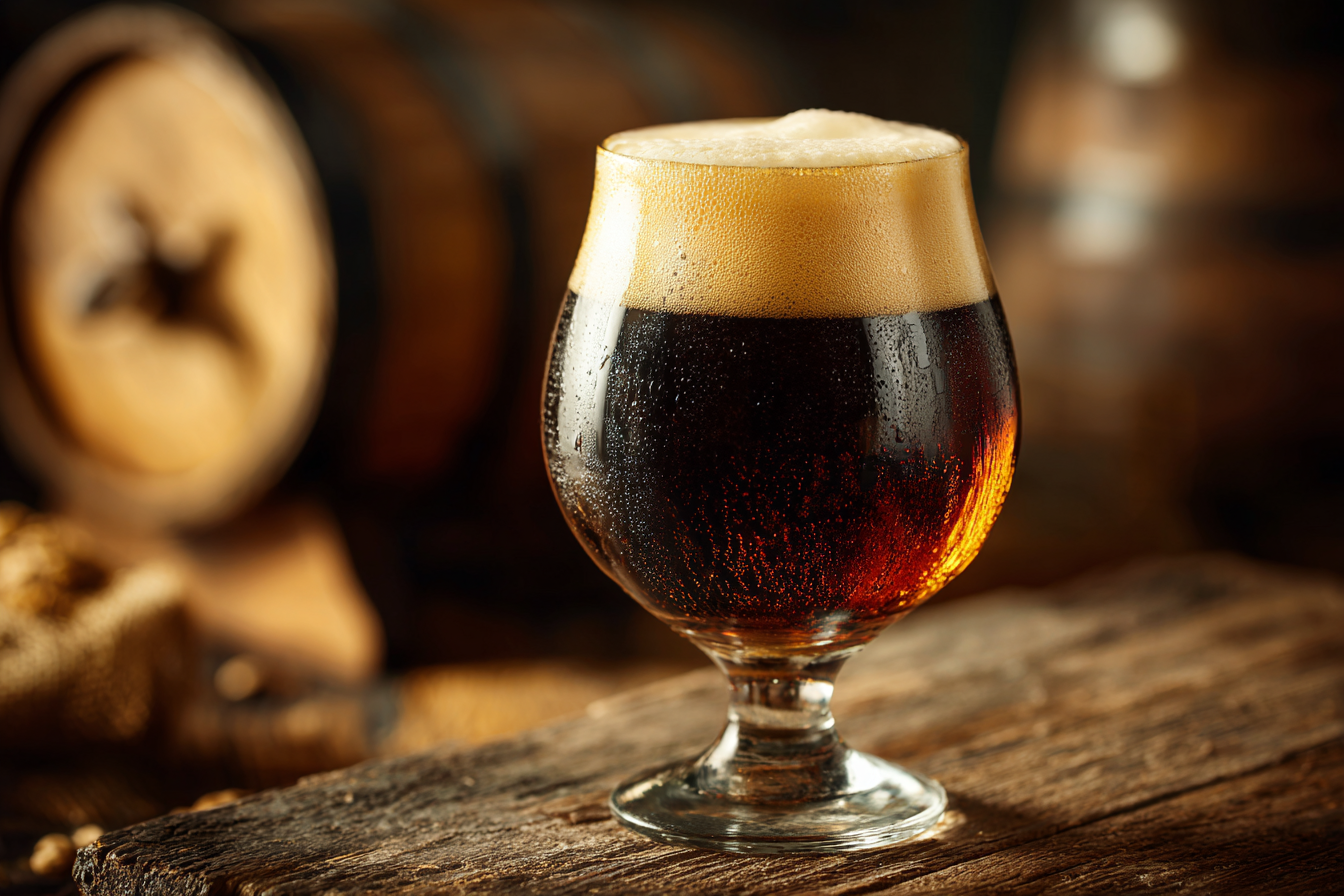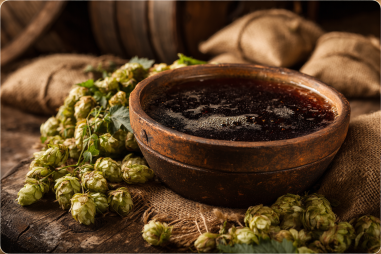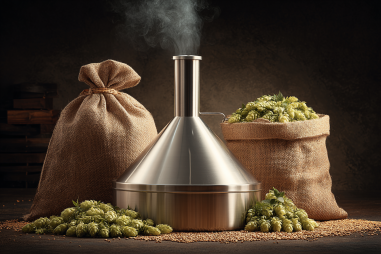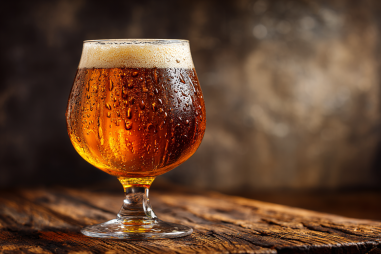If you’re a fan of rich, full-bodied ales, then exploring the distinctive flavor profile of wee heavy beer is a must. Originating in Scotland, this style of ale is renowned for its deep malt richness, subtle complexity, and warming character. In this article, we’ll take a closer look at what defines a wee heavy, diving into its malt sweetness, hop balance, aromatic qualities, and more. Whether you’re a seasoned beer enthusiast or just starting your craft beer journey, understanding the nuances of wee heavies will enhance your tasting experience and appreciation for this classic ale.
Introduction to Wee Heavy Flavor Notes
Wee heavy beers, sometimes also called Scotch ales (though distinctions exist), are a beloved style that showcases a robust malt profile and substantial body. The term “wee heavy” roughly translates to “small strong,” reflecting their relatively high alcohol content despite typically smaller serving sizes. At the core of this flavor profile is a harmonious blend of sweetness, roasted malt character, and gentle hop bitterness. Unlike hoppy pale ales or crisp lagers, wee heavies lean into richness and depth, making each sip a warming experience that tells a story of Scottish brewing tradition.
Malt Sweetness and Caramel Complexity
The hallmark of any wee heavy is undoubtedly its malt backbone. Brewers craft this style using generous amounts of malted barley that often include caramel and crystal malts, contributing to the beer’s signature sweet and syrupy character. These malts impart flavors reminiscent of toffee, caramel, molasses, and sometimes even a slight nuttiness.
As the beer ferments, the malt sugars create a dense, luscious mouthfeel, which complements the dulcet sweetness without becoming cloying. The malt complexity can range from notes of burnt sugar to a raisin-like fruitiness, especially in higher alcohol versions where the yeast esters reveal subtle dark fruit flavors. This malt-forward approach is integral to the wee heavy’s identity and sets it apart from lighter ales and stouts.
Hop Bitterness and Balance
While the malt dominates, hops play a critical supporting role in achieving balance in wee heavy beers. Typically, these ales feature moderate hop bitterness—enough to counteract the sweetness without overwhelming it. Traditional Scottish varieties like East Kent Goldings or Fuggles often provide earthy, herbal, or slightly floral notes that weave into the malt richness smoothly.
The hop profile tends to be restrained, placing focus on complementing rather than competing with the malt character. This harmony is what makes wee heavies so approachable: the bitterness cleanses the palate gently, preparing the drinker for the next rich, warming sip.
Alcohol Warmth and Mouthfeel
Wee heavy beers usually boast a higher alcohol content, often ranging from 6.5% up to 10% ABV or more. This alcohol strength contributes to a warming sensation that’s all part of the beer’s appeal. The warmth is felt throughout the palate, delivering a comforting, almost whisky-like character without being harsh or overly boozy.
Additionally, mouthfeel in wee heavy ales is typically full and silky, with a soft carbonation that keeps the beer from feeling heavy or dense. The rich malt foundation combined with the alcohol heat creates a pleasurable thickness that carries the intense flavors, making the beer an excellent drink for sipping slowly and savoring.
Aromatic Elements: Fruity and Smoky Hints
The aroma of a wee heavy is as inviting as its taste. Due to specific yeast strains and malt types, these ales often offer a complex bouquet that includes fruity esters and subtle smokiness. The fruity notes range from dark fruits like plum, raisin, and cherry to lighter orchard fruits on occasion, depending on the brewery’s fermentation process.
Smoky hints can also be present, though usually mild; these arise from traditional malting methods that sometimes employ peat smoke or from the darker roasted malts. The smoky aroma adds a layer of depth and authenticity that evokes the Scottish heritage of the style. Together, these aromatic layers create an enticing sensory experience from the very first sniff.
Pairing Flavors and Food
Wee heavy beers are versatile when it comes to food pairing, thanks to their malt sweetness, moderate bitterness, and warming finish. Their rich and robust profiles make them excellent companions to similarly hearty and flavorful dishes. Here are some ideal pairings:
- Roasted or braised meats: Think beef stew, lamb shanks, or pork shoulder, where the malt sweetness complements the caramelization and umami flavors of the meat.
- Smoked foods: Smoked sausages, hams, or even smoky cheeses bring out the subtle smoky notes in the beer.
- Hearty stews and soups: The full body and warmth can stand up to rich, savory broths and dense vegetable stews.
- Sweet desserts: Desserts like sticky toffee pudding or caramel flan echo the malt’s sweet complexity for a wonderfully cohesive finish.
Whether you’re looking to enhance a meal or enjoy the beer solo, these pairing ideas ensure a delicious match for a satisfying dining experience.
Variations Across Different Breweries
While the style guidelines provide a solid framework, different breweries put their own spin on wee heavy beers, resulting in a delightful range of variations. Some focus on amplifying the caramel and toffee notes, producing thicker, syrupy versions. Others highlight smokiness or introduce slight peat influence, paying homage to Scottish traditions.
Variations also occur in alcohol strength and hop selection. For instance, some contemporary craft brewers may increase hop bitterness or experiment with adding spices to create a more modern interpretation. Meanwhile, classic brewers tend to uphold the traditional profile with moderate ABV and restrained hop presence.
Exploring these variations provides a fascinating glimpse into how brewers balance innovation and tradition, inviting beer lovers to experience the diverse expressions of this iconic Scottish style.
Tasting Tips and Recommendations
To fully appreciate the complex flavor profile of a wee heavy beer, here are some tips for tasting and enjoying:
- Serve at the right temperature: Slightly warmer than typical ales, around 50-55°F (10-13°C), to allow the rich flavors and aromas to shine.
- Use an appropriate glass: A tulip or snifter glass helps concentrate aromas and enhances the drinking experience.
- Take your time: Sip slowly to savor the malt sweetness, balance of bitterness, and warming finish. Notice how the flavors evolve on your palate.
- Pair thoughtfully: Bring along complementary foods to elevate the tasting, such as aged cheeses or roasted meals.
- Try different versions: Sample wee heavies from various breweries to explore subtle differences and develop your personal favorites.
With these tips in hand, you’ll be well-equipped to enjoy the rich, layered world of wee heavy beers at your own pace.
Unearthing the Character of Wee Heavy
Exploring a wee heavy beer is like journeying into the heart of Scottish brewing culture. Its rich malt sweetness, balanced by gentle bitterness, aromatic complexity, and warming alcohol presence culminate in an unforgettable experience. Whether paired with hearty food or enjoyed as a contemplative sip on a chilly evening, wee heavy ales offer a distinct and satisfying flavor profile that rewards both new drinkers and connoisseurs alike.







